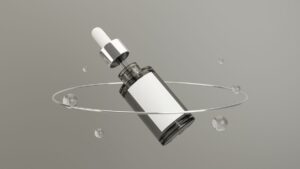What Are Androgen Receptors?

Table of Contents
Androgen receptors (AR) are a type of steroid hormone receptor found within various tissues of the human body. They play a crucial role in mediating the effects of androgens—male sex hormones like testosterone and dihydrotestosterone (DHT). Understanding androgen receptors is essential, especially in the context of male sexual differentiation, certain genetic conditions, and diseases such as prostate cancer.
What Do Androgen Receptors Do?
Androgen receptors function by binding to androgens circulating in the bloodstream. Once an androgen binds to the ligand-binding domain of the receptor, the receptor undergoes a conformational change, activating it. The activated androgen receptor protein then moves into the cell nucleus, where it binds to specific DNA sequences called androgen response elements. This binding regulates the expression of androgen-regulated genes, influencing a range of physiological processes from muscle development to hair growth.
What Happens When the Androgen Receptor Is Activated?
Activation of the androgen receptor leads to the modulation of gene expression. In target tissues, this can result in:
- Male Sexual Differentiation: During fetal development, AR activation is critical for the formation of male genitalia.
- Development of Secondary Sexual Characteristics: In puberty, AR influences the growth of facial hair, deepening of the voice, and increased muscle mass.
- Maintenance of Reproductive Function: AR plays a role in spermatogenesis and libido.
In certain conditions, such as in prostate cancer cells, AR activation can stimulate tumour growth. This is why understanding the androgen receptor structure role in prostate cancer and drug discovery is vital for developing effective treatments.
What Happens When Androgen Receptors Are Blocked?
Blocking androgen receptors can inhibit the effects of androgens. This is a therapeutic strategy used in treating conditions like prostate cancer. Medications known as anti-androgens bind to the ligand-binding domain of the receptor without activating it, preventing natural androgens from binding. This can lead to reduced tumour growth in prostate cancer patients.
However, blocking AR can also result in side effects due to decreased androgen activity, such as reduced libido, fatigue, and loss of muscle mass.
What Is Caused by a Lack of Androgen Receptors?
A deficiency or mutation in the androgen receptor gene (AR gene), which is located on the X chromosome, can lead to Androgen Insensitivity Syndrome (AIS). Individuals with AIS have a partial or complete inability to respond to androgens. This can cause:
- Complete AIS: Individuals have a typical female external appearance despite having XY chromosomes.
- Partial AIS: Individuals may have ambiguous genitalia, with varying degrees of undervirilisation.
AIS highlights the critical role of AR in male sexual differentiation and the development of male characteristics.
Functions of the Androgen Receptor
- Regulation of Gene Expression: AR influences genes involved in muscle growth, bone density, and reproductive functions.
- Interaction with Steroid Hormone Receptors: AR is part of a larger family of receptors that respond to steroid hormones, affecting various physiological processes.
- Role in Prostate Health: In the prostate gland, AR regulates growth and function. Overactivation can contribute to conditions like castrate-resistant prostate cancer.
Androgen Receptor Structure and Its Role in Prostate Cancer and Drug Discovery
The human androgen receptor comprises several domains:
- DNA Binding Domain (DBD): Binds to androgen response elements on DNA to regulate gene expression.
- Ligand-Binding Domain: The site where androgens bind to activate the receptor.
- N-terminal Domain: Contains regions like CAG repeat lengths that can affect receptor function.
In prostate cancer, mutations or amplifications in the AR gene can lead to abnormal receptor activity. Understanding these structural aspects is crucial for developing drugs that can effectively target the receptor in androgen-insensitive or castrate-resistant prostate cancer.
Conclusion
Androgen receptors are vital components in the regulation of numerous physiological processes, from sexual development to muscle maintenance. Their role in diseases like prostate cancer makes them a significant focus in medical research and drug development. By comprehending the functions and mechanisms of the androgen receptor, scientists can devise targeted therapies to treat related conditions effectively.
For researchers exploring the complexities of androgen receptors and their modulators, we offer an elite range of individual SARMs designed exclusively for laboratory research. Our superior quality Selective Androgen Receptor Modulators (SARMs) are crafted to facilitate groundbreaking studies in muscle growth, tissue regeneration, and metabolic processes.
Each SARM in our collection is a testament to purity and performance, providing unmatched potential for your investigative pursuits. Trust in our commitment to excellence to elevate your laboratory research to new heights. Please note, our SARMs are intended solely for research purposes, supporting scientific innovation responsibly.
Disclaimer: Vicorpus does not endorse or promote the use of Sarms or Peptides for human consumption. Our blog posts are intended for informational purposes only and address common inquiries found on various forums. The sale of Sarms and Peptides is strictly limited to researchers for scientific and research purposes.
Share This Post
More To Explore
Commonly Asked Questions
Subscribe to our emailing list to receive our latest news, articles and promotions. You may unsubscribe at any time.

Privacy Policy Shipping Refund & Returns Terms & Conditions
Copyright © 2023 VI Corpus. All rights reserved

